The religion of the original Viking settlers of Iceland, the old Norse paganism Ásatrú, is not just still alive and well in Iceland, it is undergoing something of a renaissance. Here is our quick guide to the current state of Ásatrú, the ancient religion of the Vikings, in Iceland.
1. It was abandoned in favor of Christianity in the year 1000

While Ásatrú was the religion of the vast majority of the settlers of Iceland, some had been converted to Christianity while travelling in Europe. During the first centuries of Icelandic history Christianity made further inroads, and by the end of the 10th century it was clear Ásatrú was on the retreat.
In the year 1000 the parliament of the Viking commonwealth, Alþingi, decreed that Christianity would be the only religion in Iceland. The decision was made to forestall a divided nation, split between the practitioners of Ásatrú and Christianity, each governed by a different legal code. Practitioners of the old religion were permitted to continue its practice in secret, but Christianity quickly replaced Ásatrú as the religion of Icelanders.
2. It was re-recognized in 1973
Ásatrú was only re-recognized as a religion by the state in 1973. A group of people who were either practitioners of the ancient religion or its students had been meeting for some time. This group, led by Sveinbjörn Beinteinsson who later became the first high-priest of the association, decided to establish a formal congregation and request recognition from the state. This meeting was held on the First Day of Summer, a unique Icelandic holiday which marks the end of winter and beginning of summer. At the time the number of members was just 12.
Read more: Icelanders celebrate the unique public holiday First Day of Summer

Ásatrúarfélagið, the Pagan Association, was formally founded in the spring of 1992. The first blót (the rituals of Ásatrú are called blót) was held on Jónsmessa, Midsummer Night. The state granted the association formal recognition as a religious organization on May 16 1973.
Sveinbjörn served as Allsherjargoði, the high-priest of Ásatrúarfélagið until his death in 1993. He was succeeded by Jörnmundur Ingi Hansen, who served until 2002. The third Allsherjargoði was Jónína K. Berg, the first woman to hold the office, served from 2002-2003 when the current Allsherjargoði, Hilmar Örn Hilmarsson, assumed office.
3. It is Iceland's fastest growing religion
According to figures from Statistics Iceland 3,583 people belonged to Ásatrúarfélagið on January 1 2017, up from 1,040 members 10 years ago. The membership has grown by 244% since 2007, making paganism the fastest growing religion in Iceland over the past decade.
The figures show that the share of Pagans in Iceland now tops 1% of the population for the first time for nearly a millennium.
Ásatrúarfélagið is the sixth largest religion in Iceland, and the largest non-Christian religion.
4. No proselytizing or missionary work

This growth has come in spite of the fact that unlike other religious organizations Ásatrúarfélagið has never engaged in any form of missionary work or proselytizing.
Hilmar Örn Hilmarsson, the high priest of Ásatrúarfélagið, has said that he believes the reason for the growing interest in Ásatrú is caused by more and more people are learning about what the association does and seeing their ceremonies.
5. One high priest, 10 Goðar
The organization of Ásatrúarfélagið is based on the historic organization of Ásatrú during the Viking age. Priests in Ásatrú are called Goði, with each Goði responsible for a congregation goðorð. While the goðorð were associated with certain geographic areas during the Viking age, people were free to choose their Goði.

The highest office in Ásatrú is the Allsherjargoði, The Goði of All. The second highest office is Kjalnesingagoði The Goði of Kjalarnesþing, which comprised the areas controlled by the descendants of Ingólfur Arnarson, the first settler of Iceland. This area corresponds to the greater Metropolitan Area.
Nine other Goðar (the plural for Goði) serve different geographic regions. The Goðar can perform all religious services, including naming ceremonies, marriages, funerals and blót.
6. All the ceremonies of Ásatrúarfélagið are open to the general public
The weekly meetings of Ásatrúarfélagið are open to the public, as are all its official ceremonies, the blót.
Ásatrúarfélagið has four main blót each year: Jólablót (Yule-blót) at winter solstice in honor of the goddess Freyja, Sigurblót (Victory-blót) held on Sumardagurinn Fyrsti in the spring in honor of the god Freyr, Þingblót (Þing/assembly-blót) on Summer solstice held in honor of the laws, the Þing and human society, and Veturnáttablót (Winter-nights-blót) held on the first day of winter. Veturnáttablót is in honor of Óðinn, the god of the gods.
Read more: The great mid-winter feast named Þorrablót, in honour of the Nordic god of thunder
Ásatrúarfélagið has other blót, including a Þorrablót in mid-winter.
Ásatrúarfélagið has an open house in Reykjavík at Síðumúli 15 every Saturday 14:00-16:00.
7. First pagan temple since 1000 will be opened in 2018


Next year Ásatrúarfélagið will move into a new temple just outside downtown Reykjavík. The temple would be the first heathen central temple built in the Nordic countries for more than a thousand years.
Ásatrúarfélagið has been working on the new temple in the southern slope of Öskjuhlíðin hill just outside downtown Reykjavík for two years. In March 2015 a ceremony was held to consecrate the ground where the temple will rise, and last year a ceremony was held to thank Mother Nature for the timber for the temple.
Read more: Perlan wrongly thought to be new heathen temple
The temple will be 400 square meter (4,300 sq ft) dome which will be able to accommodate 250 people. The temple is expected to be opened to the public in March 2018.
8. There is no prescribed dogma or scripture
Ásatrú has no prescribed dogma or scripture. However, You are however encouraged to read the Poetic and Prose Eddas written by the 13th-century chieftain and scholar, Snorri Sturluson.
No one actually prays to the gods and how you might ask their intercession is entirely up to you. The gods are imperfect and not divine. They are seen more as friends and don´t judge us humans.
9, It is a religion of peace and tolerance
Ásatrú, as it has been practiced in Iceland, is a religion of nature and life, stressing the harmony of the natural world and the search for harmony in the life of individuals. It's openness and philosophical character has led some to compare it to Unitarian Universalism.
Read more: Heathens against hate: Exclusive interview with the high priest of the Icelandic Pagan Association

Hilmar Örn Hilmarsson, the high priest of Ásatrúarfélagið, has stressed that Ásatrú is a religion of peace and respect. “It is a religion which teaches you how to live in harmony with your surroundings and yourself, and how to deal with the different phases of your life. How to become of age and then how to age.” True to this Ásatrú is a religion of respect and tolerance. “We reflect Icelandic society and Icelandic values,”
As a natural religion the Ásatrú stresses the interconnection of all things and especially a respect for nature. Members are environmentally aware and know that for Mother Earth to be be bountiful she must be cared for and nurtured. The association has taken a firm stand on conservation and environmentalism.
10. It rejects militarism and the glorification of heroism, battles and blood.
Many neo-pagan groups in Europe and the US who consider themselves observers of the religion of the Vikings, practice a religion which glorifies battles, militarism, masculine heroism and in some cases chauvinism, violence, intolerance and racism. Some white-power groups and members of Aryan Nation gangs practice these forms of paganism.
Ásatrúarfélagið rejects this as a misreading of Ásatrú.
11. Ásatrúarfélagið has received hate mail from reactionary heathens abroad
Ásatrúarfélagið has cut all ties with foreign associations of pagans after receiving harassment and hate mail from people who are angry with emphasis the association has placed upon equality and respect for human rights, especially LGBTQ rights.
Read more: The Icelandic Pagan Association receives hate-mail from reactionary pagans abroad

Every year the priests of Ásatrúarfélagið have officiate dozens of same-sex marriages. Same sex couples come to Iceland with the sole purpose of being married in a Ásatrú ceremony.
Anyone can practice the religion
But only Icelandic residents can join Ásatrúarfélagið
Only Icelandic citizens or people who have a domicile in Iceland can become members of the Ásatrúarfélag, but anyone can practice Ásatrú, regardless of their nationality or residence. It costs nothing to join and is open to all, irrespective of race, cultural background, gender or sexual orientation.
The religion of the original Viking settlers of Iceland, the old Norse paganism Ásatrú, is not just still alive and well in Iceland, it is undergoing something of a renaissance. Here is our quick guide to the current state of Ásatrú, the ancient religion of the Vikings, in Iceland.
1. It was abandoned in favor of Christianity in the year 1000

While Ásatrú was the religion of the vast majority of the settlers of Iceland, some had been converted to Christianity while travelling in Europe. During the first centuries of Icelandic history Christianity made further inroads, and by the end of the 10th century it was clear Ásatrú was on the retreat.
In the year 1000 the parliament of the Viking commonwealth, Alþingi, decreed that Christianity would be the only religion in Iceland. The decision was made to forestall a divided nation, split between the practitioners of Ásatrú and Christianity, each governed by a different legal code. Practitioners of the old religion were permitted to continue its practice in secret, but Christianity quickly replaced Ásatrú as the religion of Icelanders.
2. It was re-recognized in 1973
Ásatrú was only re-recognized as a religion by the state in 1973. A group of people who were either practitioners of the ancient religion or its students had been meeting for some time. This group, led by Sveinbjörn Beinteinsson who later became the first high-priest of the association, decided to establish a formal congregation and request recognition from the state. This meeting was held on the First Day of Summer, a unique Icelandic holiday which marks the end of winter and beginning of summer. At the time the number of members was just 12.
Read more: Icelanders celebrate the unique public holiday First Day of Summer
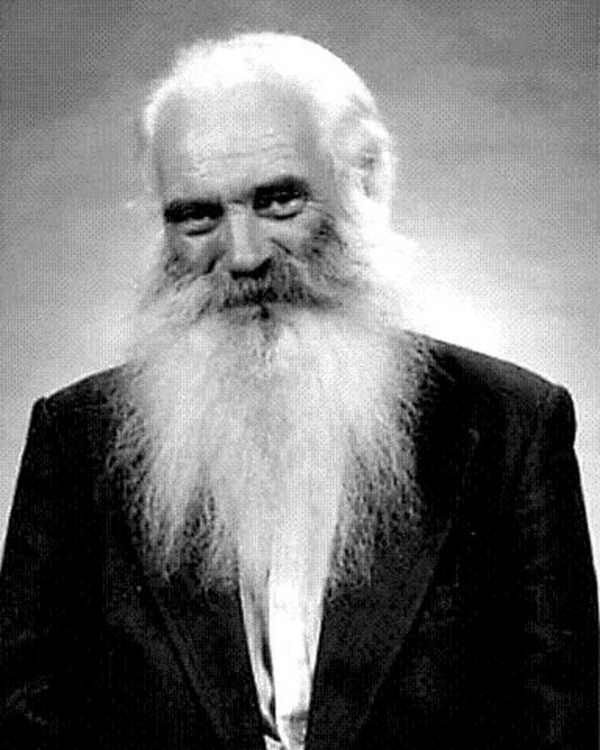
Ásatrúarfélagið, the Pagan Association, was formally founded in the spring of 1992. The first blót (the rituals of Ásatrú are called blót) was held on Jónsmessa, Midsummer Night. The state granted the association formal recognition as a religious organization on May 16 1973.
Sveinbjörn served as Allsherjargoði, the high-priest of Ásatrúarfélagið until his death in 1993. He was succeeded by Jörnmundur Ingi Hansen, who served until 2002. The third Allsherjargoði was Jónína K. Berg, the first woman to hold the office, served from 2002-2003 when the current Allsherjargoði, Hilmar Örn Hilmarsson, assumed office.
3. It is Iceland's fastest growing religion
According to figures from Statistics Iceland 3,583 people belonged to Ásatrúarfélagið on January 1 2017, up from 1,040 members 10 years ago. The membership has grown by 244% since 2007, making paganism the fastest growing religion in Iceland over the past decade.
The figures show that the share of Pagans in Iceland now tops 1% of the population for the first time for nearly a millennium.
Ásatrúarfélagið is the sixth largest religion in Iceland, and the largest non-Christian religion.
4. No proselytizing or missionary work
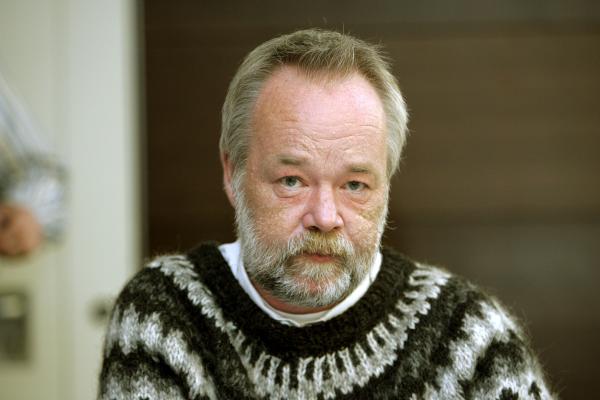
This growth has come in spite of the fact that unlike other religious organizations Ásatrúarfélagið has never engaged in any form of missionary work or proselytizing.
Hilmar Örn Hilmarsson, the high priest of Ásatrúarfélagið, has said that he believes the reason for the growing interest in Ásatrú is caused by more and more people are learning about what the association does and seeing their ceremonies.
5. One high priest, 10 Goðar
The organization of Ásatrúarfélagið is based on the historic organization of Ásatrú during the Viking age. Priests in Ásatrú are called Goði, with each Goði responsible for a congregation goðorð. While the goðorð were associated with certain geographic areas during the Viking age, people were free to choose their Goði.
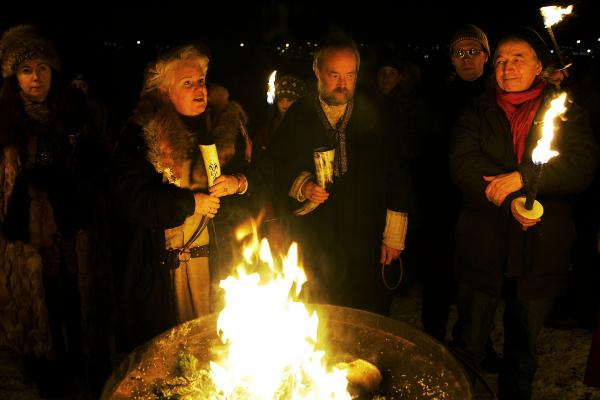
The highest office in Ásatrú is the Allsherjargoði, The Goði of All. The second highest office is Kjalnesingagoði The Goði of Kjalarnesþing, which comprised the areas controlled by the descendants of Ingólfur Arnarson, the first settler of Iceland. This area corresponds to the greater Metropolitan Area.
Nine other Goðar (the plural for Goði) serve different geographic regions. The Goðar can perform all religious services, including naming ceremonies, marriages, funerals and blót.
6. All the ceremonies of Ásatrúarfélagið are open to the general public
The weekly meetings of Ásatrúarfélagið are open to the public, as are all its official ceremonies, the blót.
Ásatrúarfélagið has four main blót each year: Jólablót (Yule-blót) at winter solstice in honor of the goddess Freyja, Sigurblót (Victory-blót) held on Sumardagurinn Fyrsti in the spring in honor of the god Freyr, Þingblót (Þing/assembly-blót) on Summer solstice held in honor of the laws, the Þing and human society, and Veturnáttablót (Winter-nights-blót) held on the first day of winter. Veturnáttablót is in honor of Óðinn, the god of the gods.
Read more: The great mid-winter feast named Þorrablót, in honour of the Nordic god of thunder
Ásatrúarfélagið has other blót, including a Þorrablót in mid-winter.
Ásatrúarfélagið has an open house in Reykjavík at Síðumúli 15 every Saturday 14:00-16:00.
7. First pagan temple since 1000 will be opened in 2018

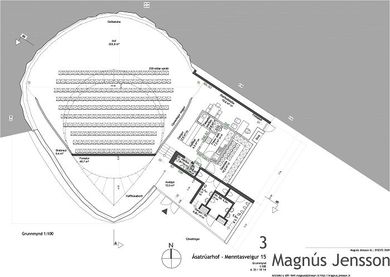
Next year Ásatrúarfélagið will move into a new temple just outside downtown Reykjavík. The temple would be the first heathen central temple built in the Nordic countries for more than a thousand years.
Ásatrúarfélagið has been working on the new temple in the southern slope of Öskjuhlíðin hill just outside downtown Reykjavík for two years. In March 2015 a ceremony was held to consecrate the ground where the temple will rise, and last year a ceremony was held to thank Mother Nature for the timber for the temple.
Read more: Perlan wrongly thought to be new heathen temple
The temple will be 400 square meter (4,300 sq ft) dome which will be able to accommodate 250 people. The temple is expected to be opened to the public in March 2018.
8. There is no prescribed dogma or scripture
Ásatrú has no prescribed dogma or scripture. However, You are however encouraged to read the Poetic and Prose Eddas written by the 13th-century chieftain and scholar, Snorri Sturluson.
No one actually prays to the gods and how you might ask their intercession is entirely up to you. The gods are imperfect and not divine. They are seen more as friends and don´t judge us humans.
9, It is a religion of peace and tolerance
Ásatrú, as it has been practiced in Iceland, is a religion of nature and life, stressing the harmony of the natural world and the search for harmony in the life of individuals. It's openness and philosophical character has led some to compare it to Unitarian Universalism.
Read more: Heathens against hate: Exclusive interview with the high priest of the Icelandic Pagan Association

Hilmar Örn Hilmarsson, the high priest of Ásatrúarfélagið, has stressed that Ásatrú is a religion of peace and respect. “It is a religion which teaches you how to live in harmony with your surroundings and yourself, and how to deal with the different phases of your life. How to become of age and then how to age.” True to this Ásatrú is a religion of respect and tolerance. “We reflect Icelandic society and Icelandic values,”
As a natural religion the Ásatrú stresses the interconnection of all things and especially a respect for nature. Members are environmentally aware and know that for Mother Earth to be be bountiful she must be cared for and nurtured. The association has taken a firm stand on conservation and environmentalism.
10. It rejects militarism and the glorification of heroism, battles and blood.
Many neo-pagan groups in Europe and the US who consider themselves observers of the religion of the Vikings, practice a religion which glorifies battles, militarism, masculine heroism and in some cases chauvinism, violence, intolerance and racism. Some white-power groups and members of Aryan Nation gangs practice these forms of paganism.
Ásatrúarfélagið rejects this as a misreading of Ásatrú.
11. Ásatrúarfélagið has received hate mail from reactionary heathens abroad
Ásatrúarfélagið has cut all ties with foreign associations of pagans after receiving harassment and hate mail from people who are angry with emphasis the association has placed upon equality and respect for human rights, especially LGBTQ rights.
Read more: The Icelandic Pagan Association receives hate-mail from reactionary pagans abroad
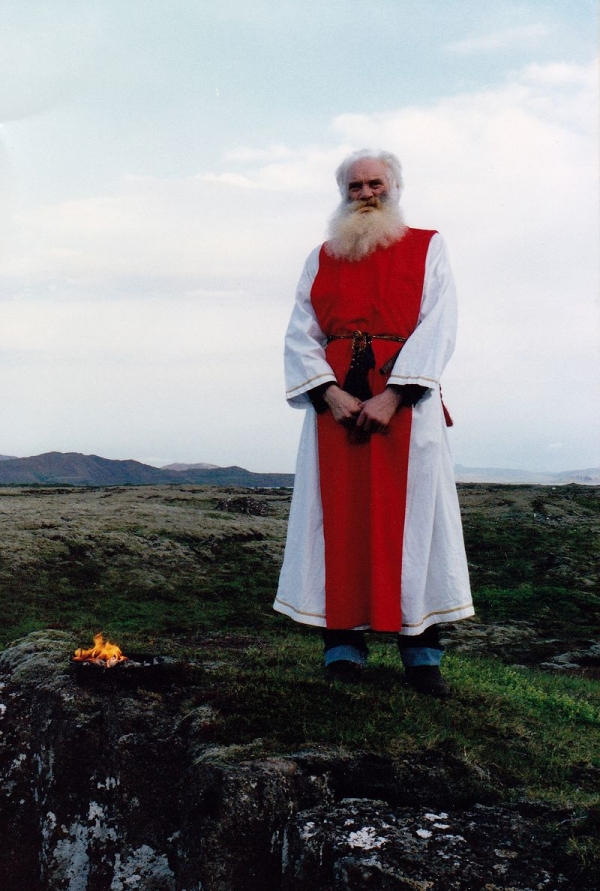
Every year the priests of Ásatrúarfélagið have officiate dozens of same-sex marriages. Same sex couples come to Iceland with the sole purpose of being married in a Ásatrú ceremony.
Anyone can practice the religion
But only Icelandic residents can join Ásatrúarfélagið
Only Icelandic citizens or people who have a domicile in Iceland can become members of the Ásatrúarfélag, but anyone can practice Ásatrú, regardless of their nationality or residence. It costs nothing to join and is open to all, irrespective of race, cultural background, gender or sexual orientation.






